Where the Buffalo Roamed…in Orange County
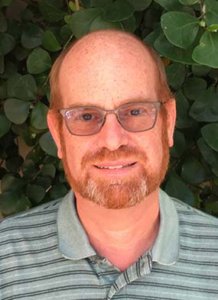
Paul Wormser, Library Director
Millions of bison once roamed North America, but Orange County w aas never part of their natural habitat. It is perhaps unsurprising that it took an amusement park — the Newport Harbor Buffalo Ranch — to introduce a herd of bison to Orange County. Although today commemorated by a street name, Bison Road, and a statue at the intersection of Bonita Canyon and MacArthur Blvd., there is little remaining evidence of the Newport Harbor Buffalo Ranch, which briefly flourished from 1955-1960.
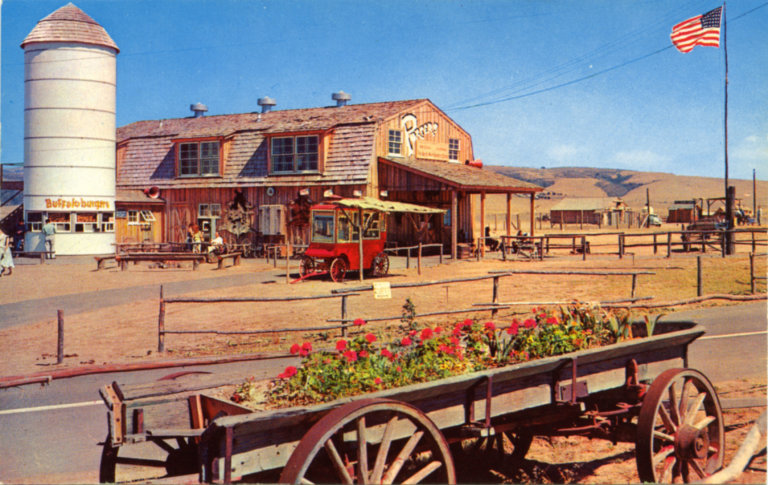
The Newport Harbor Buffalo Ranch (which was in what is today the City of Irvine) was the creation of Gene Clark, who owned a ranch in Independence, Kansas with more than one thousand bison. In 1954, Clark struck a deal with The Irvine Company to lease 115 acres for his Buffalo Ranch amusement park. In November 1954, seventy-two bison arrived — no doubt mystified by the crowd of several hundred people assembled to see the event.
Newport Harbor Buffalo Ranch offered a number of attractions. For a fee you could drive your car along a road through the pasture and view the animals up close. The ranch also offered horseback and burro rides, as well as trips on an antique fire engine and miniature steam train. People could also visit Porter’s Western Store.
For the hungry, visitors could eat at the Buffalo Ranch Cafe, or dine on buffalo burgers, “special pit Bar-B-Q-Buffalo” and buffalo steak – Indian style, whatever that might have been. For the less adventurous, the cafe also offered a “Wyatt Earp Special Steak” or a peanut butter and jelly sandwich.
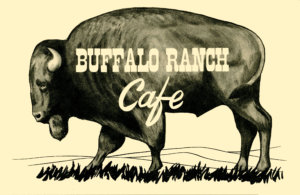
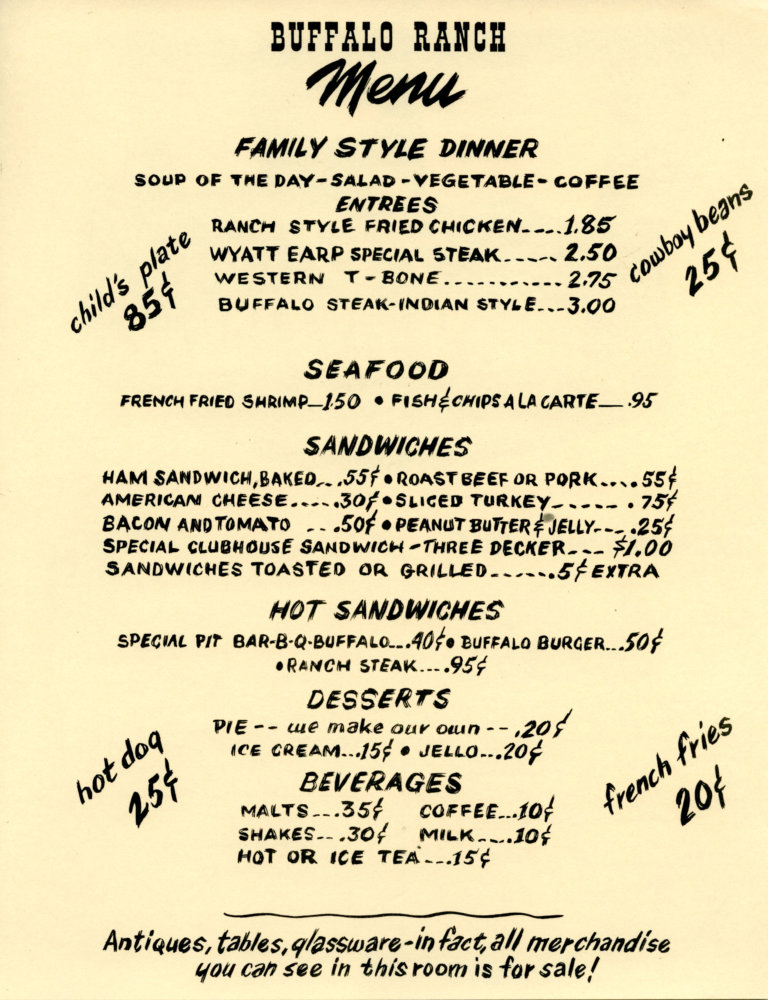
Yet the closing of the amusement park was not the end of the site’s history. About 1961, famed architect William Pereira took over the site. Pereira made additions to the original barn structure and brought other barns onto the site, naming the campus Urbanis Square. From there he drafted the master plan for Irvine Ranch and UC Irvine. His work had a lasting impact on southern Orange County.
In 1955, the ranch was even used to film an episode of the popular television show, The Adventures of Rin Tin Tin. The episode, titled “The White Buffalo” featured bison from the ranch, including one covered in white paint and milk.
The Buffalo Ranch lasted only five years. Like the bison of the great plains, the bison of Newport Harbor Buffalo Ranch fell victim to advancing civilization. A clear harbinger of the future came in 1958 when Ford Aeronautic purchased nearby land for a plant. Then word came that the University of California was interested in establishing a campus in the “buffalo ranch” area. Orange County’s bucolic past was meeting the future. The land simply became too valuable for The Irvine Company to continue to lease. In 1959, Clark announced that Buffalo Ranch would be closing. By that time, the herd had dwindled to seventeen animals.
When William Lange, founder of Lange Financial Corp. purchased the buildings in 1981, the bison had been gone for more than two decades. But thanks to Lange, bison would have one last chance to roam the nearby hills. Lange had an interest in the area’s history and made an effort to preserve the integrity of the original buildings . To commemorate the Buffalo Ranch, he acquired two bison, which later had two offspring, to live on the site.
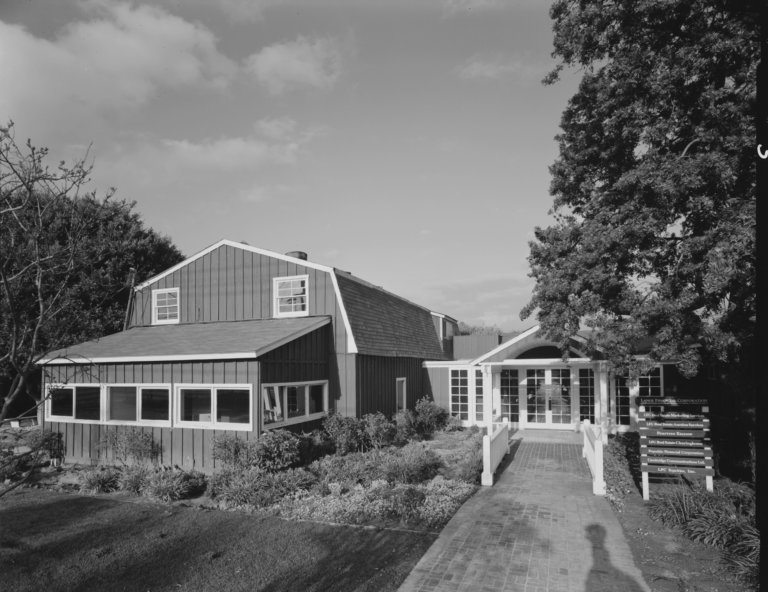
In 1989, plans for the eventual development of the corner of MacArthur Blvd. and Ford Rd. were made public. A group called Friends of the Buffalo Ranch made an effort to convince the City of Irvine to preserve the site. The Irvine City Council was sympathetic to their concerns, but unwilling to protect the site. Then in 1992, the San Joaquin Hills Transportation Corridor Agency approved plans to realign Ford Road to accommodate the toll road. More protests ensued, but to no avail.
In early 1994, Lange Financial, having lost their lease, sold one bison, Becky, to the Orange County Fairgrounds. The firm then planned a two-day “farewell” party on February 19-20, with the final event being a silent auction of the three remaining bison — Happy, Lucky and Rainbow.
An attorney and part-time rancher purchased the bison. As for the buildings, all but two were demolished. The surviving buildings – the barn and the silo – were moved to the Orange County Fairgrounds, to be part of the Centennial Farm. The County did not have the funds to restore the barn, so they planned to demolish it in 1995. That is when Dennis Holland, best known for building the topsail schooner Pilgrim of Newport, in his yard, agreed to take the barn to house his antique car collection. The barn remains today on a quiet residential street in Newport Beach.

